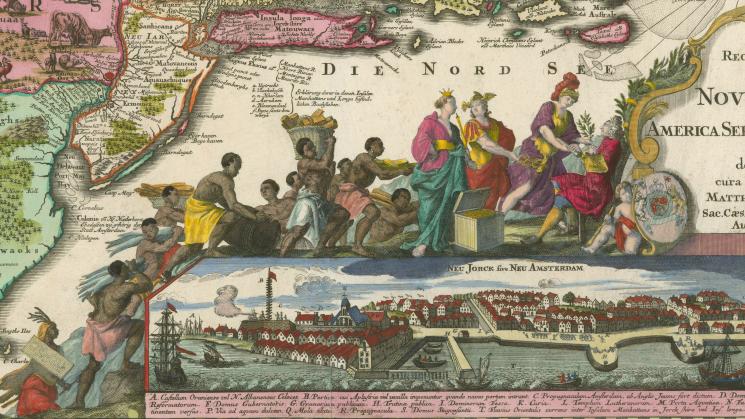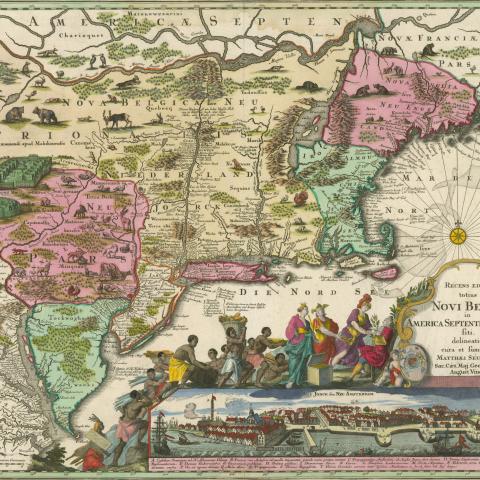Frames that Speak: An Introduction to Cartographic Cartouches

The decorative frames, or cartouches, on maps were an important cartographic design element from the fifteenth to the nineteenth century, and continue to be used on twenty-first century maps. Although cartouches are one of the most visually engaging elements on maps, and despite the fact that it is often through the decoration of the cartouche that the cartographer speaks most directly to the viewer, revealing his or her interests or prejudices, there is no detailed study of them, no discussion of their earliest history or development, and no attempt to interpret the symbolism of a large number of them together. This lecture will present the early history and development of cartouches, examine some of their sources, and explain the symbolism of several remarkable cartouches in detail.
Chet Van Duzer is a Researcher in Residence at the John Carter Brown Library and a board member of the Lazarus Project at the University of Rochester, which brings multispectral imaging to cultural institutions around the world. He has published extensively on medieval and Renaissance maps. In 2018 Springer published his book Henricus Martellus’s World Map at Yale (c. 1491): Multispectral Imaging, Sources, and Influence, and Springer has also just published his book Martin Waldseemüller’s Carta marina of 1516: Study and Transcription of the Long Legends Martin Waldseemüller’s Carta marina of 1516: Study and Transcription of the Long Legends. He recently completed a David Rumsey Research Fellowship at Stanford and the John Carter Brown Library studying Urbano Monte’s manuscript world map of 1587. His current project is a book about cartographic cartouches.
